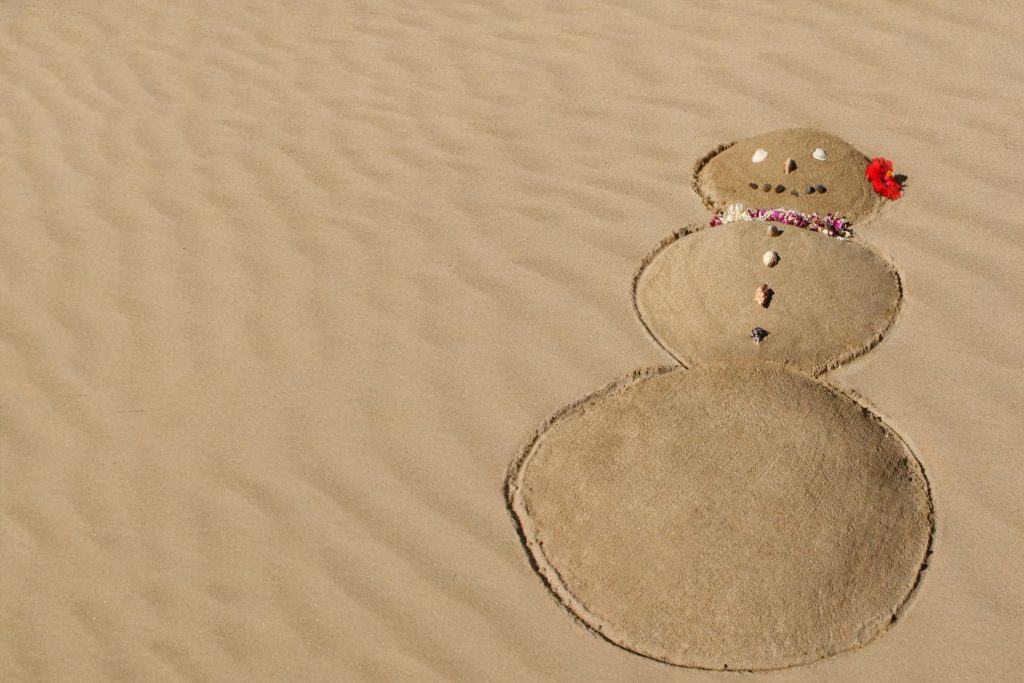Maui nō ka ʻoi or, Maui is the best!
Traveling to Maui is an incredibly enjoyable and unforgettable experience. Known for its stunning landscapes, beautiful beaches, lush greenery, and diverse outdoor activities, Maui is the second-largest Hawaiian island that promises an adventure of a lifetime. Before embarking on your journey, there are some essential things to know.
Maui enjoys a tropical climate, with temperatures typically ranging from 70°F to 85°F (21°C to 29°C). While the west and south coasts are drier and sunnier, the east and north coasts boast lush vegetation and occasional rainfall.
The best time to visit Maui is during the shoulder seasons of spring (April to May) and fall (September to November). These months offer pleasant weather and fewer crowds compared to the peak summer and winter seasons, allowing you to explore the island without feeling overwhelmed.
One of the key advantages of visiting Maui during the shoulder seasons is the reduced number of tourists compared to the peak summer and winter seasons. As a result, you can explore the island’s attractions and beaches with more ease and less congestion. Popular spots, such as the Road to Hana and Haleakalā National Park, are likely to be less crowded.
Additionally, during the spring and fall, you have a better chance of finding available accommodations at reasonable rates. While Maui is a year-round destination, the high demand during the peak summer and winter seasons often leads to higher prices and limited availability. By visiting during the shoulder seasons, you can secure better deals on accommodations and potentially enjoy added perks or special offers.

Winter is considered the peak tourist season in Maui and attracts a large number of travelers from colder regions like North America and Europe. The winter months from December to February boast pleasant temperatures ranging from 70°F to 80°F (21°C to 27°C) along the coasts, making it an attractive destination for those seeking a warm getaway.
Despite occasional winter rain on the windward sides, Maui retains its paradise-like appeal with lush landscapes and breathtaking scenery. Exploring the Road to Hana or visiting the Haleakalā National Park in the crisp winter air can be truly enchanting experiences.
While the beaches and ocean activities are inviting, it’s important to be cautious of potential hazards, such as stronger currents and rougher seas during the winter months. Heeding the advice and warnings from lifeguards ensures a safe and enjoyable beach experience.
A major highlight of visiting Maui in winter is witnessing the awe-inspiring migration of humpback whales. From December to April, thousands of these majestic creatures journey from their feeding grounds in Alaska to Hawaiʻi’s warm waters to give birth and breed.
For a smooth Maui vacation in the peak season, remember these tips. Book accommodations early, plan activities in advance, and book whale-watching tours ahead of time. Budget wisely for potential higher prices. Expect larger crowds at tourist spots and beaches, so explore less crowded areas or choose off-peak hours. Dress comfortably for warm weather and protect yourself from the sun. Practice responsible tourism, especially during whale-watching tours.
To avoid long waits, make reservations for restaurants at popular dining spots, as they can fill up quickly during peak season. If you prefer a more tranquil experience with potentially lower prices, consider planning your trip during the shoulder seasons of spring or fall.
Whale watching season in Maui spans from November to May, with the peak season usually occurring between mid-January and March.
The humpback whales are known for their impressive size, reaching lengths of up to 45 feet and weighing up to 40 tons. Despite their massive size, these gentle giants are remarkably graceful in the water.
Whale-watching tours in Maui are a popular and responsible way to experience these majestic creatures up close. Certified tour operators offer excursions that adhere to strict guidelines to ensure minimal disruption to the whales and their natural environment. These tours are usually conducted by experienced guides who provide informative commentary about humpback whale behavior, migration patterns, and conservation efforts.
Another great way to kick off whale watching season is to visit the Maui Ocean Center’s immersive 3D exhibit, Humpbacks of Hawaiʻi Exhibit & Sphere.
This immersive experience is like no other. It allows guests to connect with humpback whales in their natural environment beneath the waves, providing a unique opportunity to witness these incredible ocean mammals up close.
The Sphere, a first-of-its-kind in Hawai‘i, integrates 4k imagery, 3D active glasses, and a 7.1 surround sound system to create a mesmerizing and realistic encounter with the humpback whales.
The film includes footage captured over two seasons in the waters around Maui, providing an authentic and captivating portrayal of these majestic creatures in their natural habitat.
The exhibit is open daily between 10 am and 4 pm and offers showings every half hour. Get tickets to the Maui Ocean Center here!
Traveling to Maui in the fall, from September to November, offers a less crowded experience. The weather is pleasant, with temperatures ranging from 70°F to 85°F (21°C to 29°C). However, fall is within the hurricane season, so monitoring weather updates is crucial.
The shoulder season brings fewer tourists, resulting in lower prices on accommodations, tours, and activities. It’s an ideal time to explore Maui without the hustle and bustle of peak seasons. Although the peak of humpback whale season is in winter, early sightings of these majestic creatures arriving in Hawaiian waters can be possible during the fall.
Fall on Maui presents a chance to partake in various unique festivals and events that honor Hawaiian culture, food, music, and other traditions.
While specific dates and events may vary from year to year, here are some of the festivals and cultural events that have been known to take place during fall in Maui:
Maui Ukulele Festival: This annual festival celebrates the ukulele, a quintessential Hawaiian instrument. It features performances by local and guest musicians, showcasing the versatility and charm of the ukulele. The festival usually takes place in September or early October.
Aloha Festivals Maui: Aloha Festivals is Hawaiʻi’ premier cultural event, celebrating the spirit of Aloha through various festivities, including music, dance, food, and arts. The celebrations start in September and continue into mid-October of each year.
Kula Festival: The Kula Festival is an annual event that began in 1982 as a fundraiser for St. John’s Ministries. It has since grown into a large event with around 2,500 attendees (pre-pandemic), featuring highlights such as quilts made by church members, Chinese handicrafts, a silent auction, live performances by entertainers like Uluwehi Guerrero and Amy Hanaili’i, and a variety of delicious food and produce for sale. The proceeds from the festival go to support St. John’s Ministries and different partner charities chosen each year.
Lahaina Front Street Halloween Celebration: On Halloween night, Lahaina’s Front Street transforms into a lively and colorful celebration. Visitors can expect to see creative costumes, live music, and a festive atmosphere in this popular Halloween event.
Hawaiian Slack Key Guitar Festival: Although not exclusive to fall, this festival celebrates the beautiful art of Hawaiian slack key guitar music, a traditional fingerpicking style unique to Hawaiʻi. Various events and performances are held throughout the year, including some in the fall season.
Traveling to Maui in the spring, from April to May, offers a refreshing experience on the island. During this time, the weather is warm and mild, with temperatures ranging from 75°F to 85°F (24°C to 29°C), providing an ideal environment for outdoor activities without the intensity of summer or the rain of the winter months.
One of the highlights of spring in Maui is the blossoming of various tropical flowers. You can expect to see colorful hibiscus (ma’o hau hele), plumeria (melia), bougainvillea (pua kepalō), and orchids( ʻokika) adorning the island. It’s also the time when many fruit trees bear fruit, including mangoes, avocados, and papayas. You may come across fruit stands or local markets selling freshly harvested fruits during this season so definitely make sure to stop and treat yourself.
Make sure to take advantage of the weather and the lush vegetation to explore the island’s various botanical gardens, nature reserves, and hiking trails. These locations provide opportunities to witness the diverse flora, from native Hawaiian plants to exotic species brought to the island from around the world. A couple noteworthy parks are:
Polipoli Spring State Recreation Area: This state park in Upcountry Maui offers a chance to experience a higher-elevation forest. Polipoli Spring is known for its native plants, including koa and māmane trees, and offers hiking trails with picturesque views.
When traveling to Maui in the spring, it’s recommended to pack light and comfortable clothing suitable for the warm and pleasant weather. T-shirts, tank tops, shorts, and skirts made of breathable fabrics will keep you cool during outdoor activities and beach excursions. While the days are warm, evenings can be cooler, especially in higher elevations, so it’s a good idea to pack a light sweater or jacket
Although spring is generally drier than winter, occasional showers can still occur, so it’s wise to be prepared with a light rain jacket or umbrella. Don’t forget to pack reef-safe sunscreen to protect yourself and the marine environment
Summer is considered a peak tourist season in Maui. From June to August, the island experiences an influx of visitors due to school vacations and the desire for warm, tropical getaways.
As a result of the high demand, tourist spots and beaches can become crowded, especially in more popular areas. Accommodations, tours, and activities can fill up quickly, and prices may be higher than during other times of the year.
Given the peak season status, it’s advisable to plan and book your trip well in advance to secure your preferred accommodations and activities. Booking early allows you to have a more seamless and enjoyable experience, as well as potentially saving you from the disappointment of limited availability.
While the summer brings larger crowds, it also offers a vibrant atmosphere with various cultural events and festivities. If you don’t mind the crowds and are prepared for the increased activity, summer in Maui can provide a wonderful opportunity to experience the island’s beauty and attractions in full swing.
The summers in Maui can be hot, especially along the coasts. The temperatures typically range from 80°F to 90°F (27°C to 32°C) during the summer months (June to August), but the island’s tropical climate, combined with the warm ocean waters, creates a pleasant environment for outdoor activities and beach adventures.
When packing for your Maui vacation, consider the warm and tropical climate of the island. Pack light and comfortable clothing suitable for the balmy temperatures, such as T-shirts, tank tops, shorts, and sundresses.
For a full list of things to do on your Maui vacation visit our blog here: https://mauioceancenter.com/things-to-do-in-maui-for-kids/
Immerse Yourself in our SEA-News featuring Hawaiʻi’s marine life, inspirational conservation, and glimpses behind-the-scenes.


